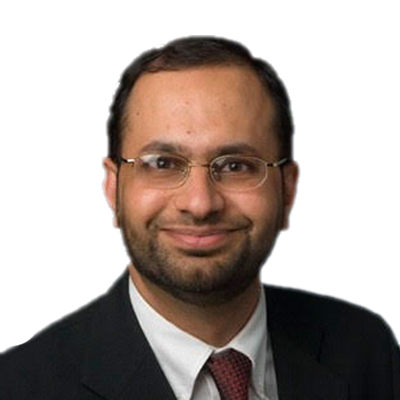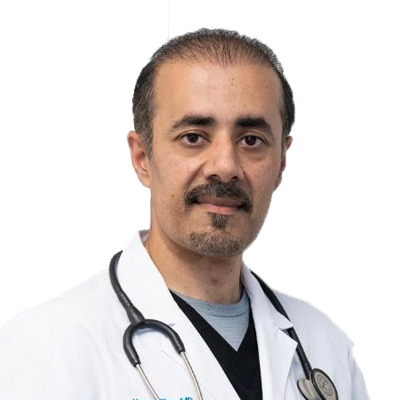Healthcare decisions are critical not just for the potential health outcomes but also for the significant financial implications. One such important diagnostic procedure is the Chest CT Scan with Contrast. Despite its crucial role in medical diagnostics, patients often find themselves in a web of opaque healthcare costs that add to their anxiety and stress. Let's unpack the layers to understand and navigate the costs of this pivotal procedure.
Understanding Chest CT Scan with Contrast
Understanding the complexities of a Chest CT Scan with contrast delves into the domain of enhanced diagnostic imaging. This procedure is a high-resolution, precise modality that utilizes computed tomography combined with a contrast agent. The contrast, typically based on iodine or barium-sulfate, is administered to a patient intravenously. This dye travels through the bloodstream and helps to accentuate the visibility of various structures within the chest cavity by increasing the contrast of the fluids and tissues within the images. When it comes to detecting abnormalities, the contrast is a game-changer; it increases the sensitivity of the CT scan. The dye makes blood vessels, tissues, and organs more conspicuous and can illuminate differences between healthy and abnormal tissue. The contrast agent is particularly effective in enhancing the visibility of:
- Blood vessels, including the aorta and pulmonary vessels.
- Lymph nodes, which can be a key in diagnosing lymphoma or metastasis.
- The heart and its associated structures for potential cardiovascular conditions.
- The soft tissues of the mediastinum, which might harbor tumors or cysts.
- The lungs, to detect pulmonary embolisms, inflammatory conditions, or tumors.
Because of the detailed nature of the images produced, the scan allows for the assessment of small nodules or lesions, which could go unnoticed in a standard X-ray. This enhanced ability to locate and identify the nature of such abnormalities is why CT scans are often crucial in the early detection of diseases this could allow for timely intervention. While the benefits of a contrast-enhanced CT scan are undeniable, it’s also important to acknowledge safety considerations. Allergic reactions to the contrast material, though rare, can occur. Therefore, it's essential for healthcare providers to inquire about any history of allergies before administering the contrast agent. Additionally, patients with kidney disease must be carefully evaluated before the contrast is approved, as it is processed through the kidneys.
Clinical Applications of CT Chest with Contrast
In real-world clinical scenarios, the application of a chest CT scan with contrast is multifaceted:
Screening: It can be a part of routine screenings for high-risk individuals, such as heavy smokers who are being monitored for lung cancer. Early detection here is key to successful treatment.
Diagnostic: For symptomatic patients presenting with nonspecific chest pain or symptoms concerning a pulmonary embolism (like shortness of breath), the scan can pinpoint the cause and guide the course of treatment.
Therapeutic Guidance: When planning for invasive procedures or determining the scope of a surgery, such as for lung cancer, the scan provides a roadmap for the surgeons.
Monitoring: To track the progression of disease or assess the effectiveness of treatments for ongoing conditions such as tuberculosis or sarcoidosis, follow-up scans with contrast are indispensable.
A Chest CT Scan with Contrast is not a mere imaging tool; it is a vital link in the chain of diagnosis, treatment, and management of chest-related ailments. Its precise, contrast-enhanced images grant clinicians a window into the often-complex landscape of our body's thoracic region, enabling a detailed view that is essential for the care and healing of patients.
Factors Influencing Cost of CT Chest with Contrast
When assessing the costs associated with a Chest CT Scan with Contrast, several variables come into play, creating a complex web of pricing that can be daunting for patients. Understanding these factors is essential for those looking to navigate their healthcare options wisely.
Facility Type: At the heart of the cost discrepancy is where the scan is conducted. Generally, hospitals have higher prices for CT scans compared to stand-alone imaging centers. The reasons are multifaceted:
- Operational Costs: Hospitals maintain a vast array of services and thus have higher overhead costs, which are often reflected in their billing practices.
- Service Availability: They offer 24/7 availability and the capacity to handle emergencies, which can add to the cost.
In contrast, specialized imaging centers are designed for outpatient care, leading to a more streamlined operational model with potentially lower costs.
Geographic Variation: The adage "location, location, location" is as relevant in healthcare costs as it is in real estate. The fees charged for CT scans can significantly differ by geography due to:
- Cost of Living: In areas with a higher cost of living, such as major metropolitan cities, the prices for medical procedures, including CT scans, tend to be higher.
- Market Competition: Places with more imaging centers may see competitive pricing, which could drive costs down.
- State Regulations: Different states have unique insurance regulations and Medicaid reimbursement rates, affecting overall healthcare costs.
Insurance Coverage: The impact of insurance on the cost of a Chest CT Scan with Contrast cannot be overstated:
- Plan Differences: Depending on a patient's insurance plan, the amount covered can vary, leaving different copays and deductibles.
- Negotiated Rates: Insurance companies negotiate rates with providers, which can vastly reduce the price compared to what is charged to the uninsured.
- Coverage Limits: Some insurance plans may not cover certain diagnostic procedures or put stipulations on their necessity, affecting out-of-pocket costs for patients.
Additional Fees: There are often hidden or additional fees that come into play with the total cost of a CT scan:
- Radiologist Interpretation: The fee for the radiologist to read the scan is a professional service often billed separately from the facility fee.
- Facility Fees: These can cover everything from the use of equipment to administrative fees, and they vary widely by location and facility type.
These hidden costs often lead to a phenomenon known as "bill shock," where patients receive much higher charges than expected for their procedures. The need for transparency in healthcare billing is essential. Until that is achieved, patients should be proactive in understanding the potential costs associated with Chest CT Scans with Contrast. They can do this by:
- Consulting with healthcare providers about the necessity of the scan and potential cost-saving alternatives if available.
- Contacting their insurance provider to understand what is covered and what their expected out-of-pocket expenses might be.
- Searchig around and compare prices at different facilities and geographical locations if possible.
- Inquiring about all possible fees and asking for estimates in writing before undergoing the procedure.
The goal is for patients to make the most informed decisions possible regarding their healthcare - and that includes the financial aspects of medical procedures.
Average Costs of Ct Chest with Contrast
Analyzing the average costs for a Chest CT Scan with Contrast across the United States presents a challenging picture due to the vast divergence in pricing. However, understanding this variability is crucial for patients who must navigate the complex healthcare financial landscape.
Nationwide Averages: Recent medical billing data provides us with a ballpark range for the cost of a Chest CT Scan with Contrast. On the lower end, prices may hover around $400, while the upper extreme can stretch over $7,000. These numbers provide a broad perspective, but the actual cost a patient might pay can fall anywhere within this spectrum—or occasionally, outside of it.
The Urban-Rural Divide: Urban areas, with their high density of healthcare facilities and increased living costs, often quote higher prices for medical procedures, including CT scans. Several factors contribute to this urban premium:
- Infrastructure Investment: Urban centers typically have more advanced technological infrastructure, demanding higher investments that are then passed on to the patient.
- Operational Expenditures: Higher staff salaries, property costs, and administrative expenses in cities also contribute to the elevated pricing structure.
Rural areas might not have the same level of infrastructure, but limited competition and fewer facilities mean that prices do not necessarily drop as one might anticipate.
State-by-State Breakdown: When we dive into a state-by-state analysis, the cost landscape shifts dramatically. Factors such as state regulations, the number of practicing radiologists, regional insurance company policies, and the general demand for health services all play a role. States with more robust healthcare competition and regulations aimed at cost containment can offer more reasonable rates. Conversely, states with less competition and regulation may see higher prices. For example, a state with a high number of imaging centers might see lower prices due to the competitive market.
Demand and Supply Dynamics: The law of supply and demand naturally affects healthcare prices as well. In states or regions where the demand for CT scans is higher—possibly due to demographic factors like an aging population—the prices can be driven up.
Insurance Negotiations: The discrepancies in payments between insured and uninsured patients can also vary by state, depending upon the negotiating power of insurance companies within those markets.
The Impact of Medicare and Medicaid: Medicare and Medicaid have set reimbursement rates that can influence the pricing strategies of healthcare facilities. States where a large percentage of the population is covered by these programs might see a different pricing structure.
Given these variables, it's paramount for individuals to research and understand the specific economic dynamics of their location. While the national average costs give us a starting point, the true cost for an individual will inevitably depend on a complex mix of geographic, economic, insurance, and personal health factors. Transparency is key, and patients must feel empowered to ask for clear information to avoid unexpected financial burdens after seeking crucial medical care.
Conclusion
As the healthcare industry progresses towards greater transparency, the aspiration is for every patient to make well-informed decisions without the looming concern of unexpected financial burdens. Platforms like Cura4U are at the forefront of revolutionizing healthcare accessibility by collaborating with multiple reputable lab and imaging service providers nationwide, including Quest Diagnostics, BioReference, Green Imaging, and Precision Imaging. Through their innovative strategies, they offer essential diagnostic procedures such as Chest CT Scans with Contrast at remarkably affordable and transparent rates, often as low as $200. These initiatives not only grant patients more autonomy in their healthcare decisions but also exemplify the positive momentum towards a more patient-centric and financially sustainable healthcare ecosystem.








